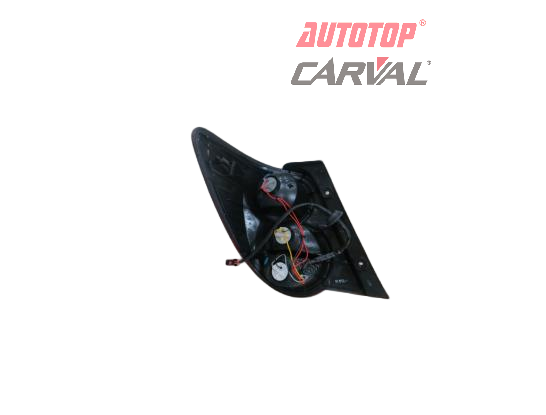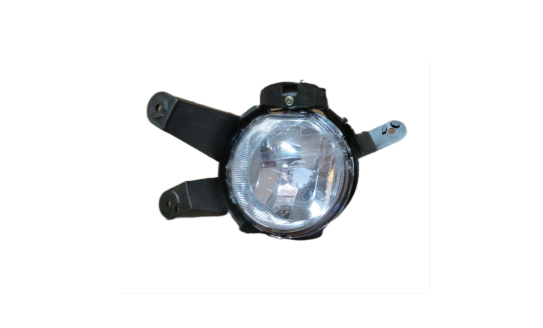เข้าใจบทบาทสำคัญของระบบไฟส่องสว่างขั้นสูงสำหรับยานยนต์
เมื่อทัศนวิสัยลดลงระหว่างการขับขี่ในเวลากลางคืนหรือในสภาพอากาศเลวร้าย การมีระบบไฟส่องสว่างที่เหมาะสมสามารถทำให้เกิดความแตกต่างระหว่างการเดินทางที่ปลอดภัยกับสถานการณ์อันตราย ไฟหมอก ทำหน้าที่เป็นคุณสมบัติด้านความปลอดภัยที่สำคัญ ซึ่งช่วยเพิ่มทัศนวิสัยและสร้างความมั่นใจให้ผู้ขับขี่มากขึ้นในสภาวะที่ท้าทาย ระบบไฟพิเศษเหล่านี้ได้รับการออกแบบมาเพื่อทะลุผ่านความชื้นและความมืดได้ดีกว่าไฟหน้ามาตรฐาน ทำให้เป็นเครื่องมือที่ขาดไม่ได้สำหรับผู้ขับขี่ยุคใหม่
แม้ว่าผู้ขับขี่หลายคนจะพึ่งพาเพียงไฟหน้ามาตรฐานของยานพาหนะ แต่การออกแบบและตำแหน่งการติดตั้งของไฟตัดหมอกที่มีความเฉพาะตัวนั้นให้ข้อได้เปรียบที่ชัดเจน ซึ่งจะเห็นได้อย่างชัดเจนโดยเฉพาะในสภาวะอากาศเลวร้าย การเข้าใจถึงความสำคัญและการใช้งานอย่างถูกต้องสามารถช่วยเพิ่มความปลอดภัยในการขับขี่และลดความเสี่ยงจากอุบัติเหตุในสถานการณ์ที่มองเห็นได้ยาก
หลักการทางวิทยาศาสตร์เบื้องหลังเทคโนโลยีไฟตัดหมอก
คุณลักษณะการออกแบบเฉพาะ
ไฟตัดหมอกได้รับการออกแบบด้วยคุณสมบัติเฉพาะที่ทำให้แตกต่างจากไฟหน้าทั่วไป ไฟชนิดพิเศษเหล่านี้ติดตั้งต่ำกว่าปกติบนตัวรถ โดยทั่วไปอยู่ด้านล่างกันชนหน้า เพื่อให้สามารถส่องสว่างพื้นผิวถนนได้อย่างมีประสิทธิภาพโดยไม่ก่อให้เกิดแสงจ้า การติดตั้งในตำแหน่งที่เฉพาะเจาะจงนี้ช่วยป้องกันไม่ให้แสงสะท้อนกลับจากหยดน้ำในหมอกหรือฝน ซึ่งอาจเกิดขึ้นได้กับไฟหน้าแบบมาตรฐานและทำให้เกิดกำแพงแสงที่ทำให้มองไม่เห็น
ลวดลายลำแสงของไฟตัดหมอกได้รับการออกแบบให้มีลักษณะกว้างและแบนราบ โดยมีเส้นตัดที่ชัดเจนด้านบน ลวดลายนี้ทำให้แสงถูกส่งไปยังพื้นผิวถนนโดยตรง และไม่กระจายขึ้นไปในอากาศที่มีความชื้น สีเหลืองหรือสีเหลืองแบบเลือกสรรที่มักใช้ในไฟตัดหมอกยังช่วยลดการสะท้อนของแสงและเพิ่มความคมชัดในสภาพที่มองเห็นได้ยาก
เทคโนโลยีการกระจายแสงขั้นสูง
ไฟตัดหมอกสมัยใหม่มีการออกแบบทางออปติกที่ซับซ้อน เพื่อปรับการกระจายแสงให้เหมาะสมที่สุด ระบบไฟตัดหมอกแบบ LED รุ่นล่าสุดใช้รูปทรงเรขาคณิตของตัวสะท้อนที่ทันสมัยและการโฟกัสลำแสงอย่างแม่นยำ เพื่อเพิ่มประสิทธิภาพการส่องสว่างบนถนน และลดการกระจายของแสงให้น้อยที่สุด ความก้าวหน้าทางเทคโนโลยีเหล่านี้ช่วยให้มองเห็นได้ดีขึ้น โดยไม่ก่อให้เกิดความรำคาญแก่ผู้ขับขี่ที่มาจากทิศทางตรงข้าม
ค่าแสงสว่างได้รับการปรับเทียบอย่างแม่นยำเพื่อให้เกิดการส่องสว่างที่เหมาะสมในเขตพื้นที่มองเห็นที่สำคัญ โดยทั่วไปคือบริเวณ 15 ถึง 50 ฟุต ด้านหน้าของรถ การกระจายแสงแบบเน้นจุดนี้ช่วยให้ผู้ขับขี่สามารถมองเห็นขอบถนน อุปสรรค และอันตรายที่อาจเกิดขึ้นได้อย่างชัดเจน โดยไม่รู้สึกแย่จากแสงสะท้อน

ประโยชน์ด้านสมรรถนะภายใต้สภาวะอากาศต่างๆ
การมองเห็นที่ดีขึ้นในหมอกและฝน
ในช่วงที่มีหมอก ไฟตัดหมอกจะแสดงศักยภาพโดยการให้แสงสว่างระดับพื้นถนนที่จำเป็น ตำแหน่งการติดตั้งที่ต่ำและการกระจายแสงรูปแบบพิเศษช่วยให้ผู้ขับขี่สามารถมองเห็นเครื่องหมายบนถนนและขอบถนนได้อย่างต่อเนื่อง แม้ในขณะที่ระยะการมองเห็นถูกจำกัดอย่างรุนแรง การส่องสว่างระดับพื้นถนนที่ดีขึ้นนี้มีความสำคัญอย่างยิ่งเมื่อขับขี่ผ่านทางโค้ง หรือตรวจพบอุปสรรคที่ไม่คาดคิดบนถนน
ในฝนตกหนัก ไฟตัดหมอกช่วยชดเชยประสิทธิภาพที่ลดลงของไฟหน้ามาตรฐาน โดยลำแสงที่มีรูปแบบเข้มข้นจะสามารถส่องผ่านสายฝนได้อย่างมีประสิทธิภาพมากขึ้น ทำให้มองเห็นพื้นผิวถนนได้ดีขึ้น และลดการรบกวนทางสายตาจากหยดน้ำที่อยู่ในอากาศ
ข้อได้เปรียบในการขับขี่ตอนกลางคืน
แม้ในสภาพอากาศที่แจ่มใส ไฟตัดหมอกก็ยังมีส่วนสำคัญต่อความปลอดภัยในการขับขี่ตอนกลางคืน โดยให้แสงสว่างเพิ่มเติมบริเวณไหล่ทางและอันตรายที่อาจเกิดขึ้น ซึ่งอาจมองไม่เห็นด้วยไฟหน้าธรรมดาเพียงอย่างเดียว การส่องสว่างเสริมนี้ช่วยให้ผู้ขับขี่รับรู้ตำแหน่งและระยะทางรอบตัวได้ดีขึ้น และลดอาการเมื่อยล้าของดวงตาขณะขับขี่ในเวลากลางคืนเป็นเวลานาน
การใช้ไฟตัดหมอกร่วมกับไฟหน้าปกติจะสร้างระบบไฟส่องสว่างที่ครอบคลุมมากยิ่งขึ้น ช่วยเพิ่มการรับรู้ความลึก และทำให้ผู้ขับขี่สามารถประเมินระยะทางและสภาพถนนได้ดีขึ้นในสถานการณ์ที่มีแสงน้อย
การติดตั้งและการพิจารณาการบำรุงรักษา
ข้อกำหนดในการติดตั้งโดยผู้เชี่ยวชาญ
การติดตั้งไฟตัดหมอกอย่างถูกต้องมีความสำคัญอย่างยิ่งต่อประสิทธิภาพและการใช้งานที่ปลอดภัย การจัดตำแหน่งและแนวของไฟตัดหมอกอย่างแม่นยำส่งผลโดยตรงต่อประสิทธิภาพในการใช้งาน การติดตั้งโดยช่างผู้เชี่ยวชาญจะช่วยให้มั่นใจได้ว่าไฟตัดหมอกถูกติดตั้งในระดับความสูงและมุมที่เหมาะสม เพื่อให้เกิดประโยชน์สูงสุด และเป็นไปตามข้อกำหนดของกฎหมายท้องถิ่น
การเชื่อมต่อระบบไฟฟ้าของไฟตัดหมอกต้องดำเนินการอย่างระมัดระวังเพื่อป้องกันการรบกวนระบบอื่นๆ ของรถ รถสมัยใหม่มักต้องการรูปแบบสายไฟเฉพาะ และอาจต้องมีการอัปเดตโปรแกรมเพื่อให้ระบบไฟตัดหมอกจากแหล่งผลิตภัณฑ์เสริมสามารถทำงานร่วมกับรถได้อย่างเหมาะสม
ขั้นตอนการบำรุงรักษาเป็นประจำ
เพื่อรักษาระดับประสิทธิภาพให้คงอยู่ ไฟตัดหมอกจำเป็นต้องได้รับการตรวจสอบและบำรุงรักษาอย่างสม่ำเสมอ ซึ่งรวมถึงการตรวจสอบการจัดแนวให้ถูกต้อง การยืนยันว่าชิ้นส่วนยึดติดยังคงแน่นหนา และการทำความสะอาดเลนส์ให้ใสอยู่เสมอ การทำความสะอาดอย่างสม่ำเสมอมีความสำคัญเป็นพิเศษ เพราะฝุ่นและคราบสกปรกบนถนนสามารถลดปริมาณแสงและประสิทธิภาพของไฟตัดหมอกได้อย่างมาก
การตรวจสอบเป็นระยะเกี่ยวกับการทำงานของไฟตัดหมอกและรูปแบบลำแสง ช่วยให้สามารถระบุปัญหาที่อาจเกิดขึ้นก่อนที่จะลุกลามเป็นปัญหาร้ายแรงได้ การตรวจสอบนี้รวมถึงการยืนยันว่าการเชื่อมต่อไฟฟ้าอยู่ในสภาพที่เหมาะสม และการเปลี่ยนหลอดไฟหรือโมดูล LED เมื่อความสว่างเริ่มลดลง
ข้อกำหนดด้านความปลอดภัยและข้อบังคับตามกฎหมาย
มาตรฐานการปฏิบัติตามกฎระเบียบตามภูมิภาค
แต่ละพื้นที่มีข้อบังคับเฉพาะที่ควบคุมการใช้งานและการติดตั้งไฟตัดหมอก ซึ่งโดยทั่วไปข้อบังคับเหล่านี้จะกำหนดข้อกำหนดเกี่ยวกับความสูงของการติดตั้ง ความเข้มของแสงที่ปล่อยออกมา และรูปแบบลำแสงที่ยอมรับได้ การทำความเข้าใจและปฏิบัติตามข้อบังคับเหล่านี้จึงมีความสำคัญอย่างยิ่งทั้งในด้านความปลอดภัยและด้านกฎหมาย
หลายเขตอำนาจยังมีกฎเฉพาะเกี่ยวกับช่วงเวลาที่สามารถใช้ไฟตัดหมอกได้ และต้องต่อสายไฟให้ทำงานแยกจากไฟรถชนิดอื่นหรือไม่ การทำความคุ้นเคยกับข้อกำหนดในพื้นที่ของคุณจะช่วยให้มั่นใจได้ว่าการใช้งานถูกต้อง และหลีกเลี่ยงปัญหาทางกฎหมายที่อาจเกิดขึ้น
มาตรฐานความปลอดภัยระหว่างประเทศ
ระบบไฟส่องสว่างของยานพาหนะ รวมถึงไฟตัดหมอก ต้องเป็นไปตามมาตรฐานความปลอดภัยระหว่างประเทศที่ควบคุมดูแลการออกแบบและการทำงาน ซึ่งมาตรฐานเหล่านี้มั่นใจว่าไฟตัดหมอกจะให้แสงสว่างได้อย่างมีประสิทธิภาพ โดยไม่ก่อให้เกิดอันตรายแก่ผู้ใช้ถนนรายอื่น ผู้ผลิตจำเป็นต้องรับรองว่าผลิตภัณฑ์ของตนเป็นไปตามมาตรฐานเหล่านี้ โดยผ่านการทดสอบและจัดทำเอกสารอย่างเข้มงวด
การพัฒนามาตรฐานความปลอดภัยอย่างต่อเนื่องยังคงขับเคลื่อนการปรับปรุงเทคโนโลยีไฟตัดหมอก ส่งผลให้เกิดทางเลือกการส่องสว่างที่มีประสิทธิภาพและประหยัดพลังงานมากยิ่งขึ้นสำหรับยานยนต์สมัยใหม่
คำถามที่พบบ่อย
ฉันควรใช้ไฟตัดหมอกเมื่อใด
ควรใช้ไฟตัดหมอกในสภาพที่มองเห็นได้ไม่ชัด เช่น หมอก ฝนตกหนัก หรือหิมะ โดยไฟตัดหมอกจะมีประสิทธิภาพสูงสุดเมื่อระยะการมองเห็นลดลงต่ำกว่า 100 เมตร อย่างไรก็ตาม ควรปิดไฟตัดหมอกเมื่อสภาพอากาศแจ่มใส เพื่อหลีกเลี่ยงการรบกวนสายตาผู้ขับขี่รายอื่นด้วยแสงจ้า
ไฟตัดหมอกสามารถแทนที่ไฟหน้าปกติได้หรือไม่
ไม่ใช่ ไฟตัดหมอกถูกออกแบบมาเพื่อเสริม ไม่ใช่เพื่อแทนที่ ไฟหน้าปกติ โดยมีจุดประสงค์เฉพาะในการให้แสงสว่างระดับต่ำในสภาวะที่มองเห็นได้ยาก แต่ไม่มีการกระจายแสงไปข้างหน้าอย่างเพียงพอสำหรับการขับขี่ในสภาวะปกติ
ฉันจะรู้ได้อย่างไรว่าไฟตัดหมอกของฉันตั้งแนวเรียบร้อยแล้ว?
การตรวจสอบการตั้งแนวไฟตัดหมอกที่ถูกต้องสามารถทำได้โดยจอดรถบนพื้นราบหันหน้าเข้าหาผนัง ลวดลายลำแสงควรกว้างและแบนเรียบ มีเส้นตัดชัดเจนที่ระดับความสูงประมาณ 2-3 ฟุต เมื่ออยู่ห่างจากรถ 25 ฟุต หากลวดลายลำแสงดูไม่สม่ำเสมอหรือสูงเกินไป อาจจำเป็นต้องปรับโดยช่างผู้เชี่ยวชาญ


